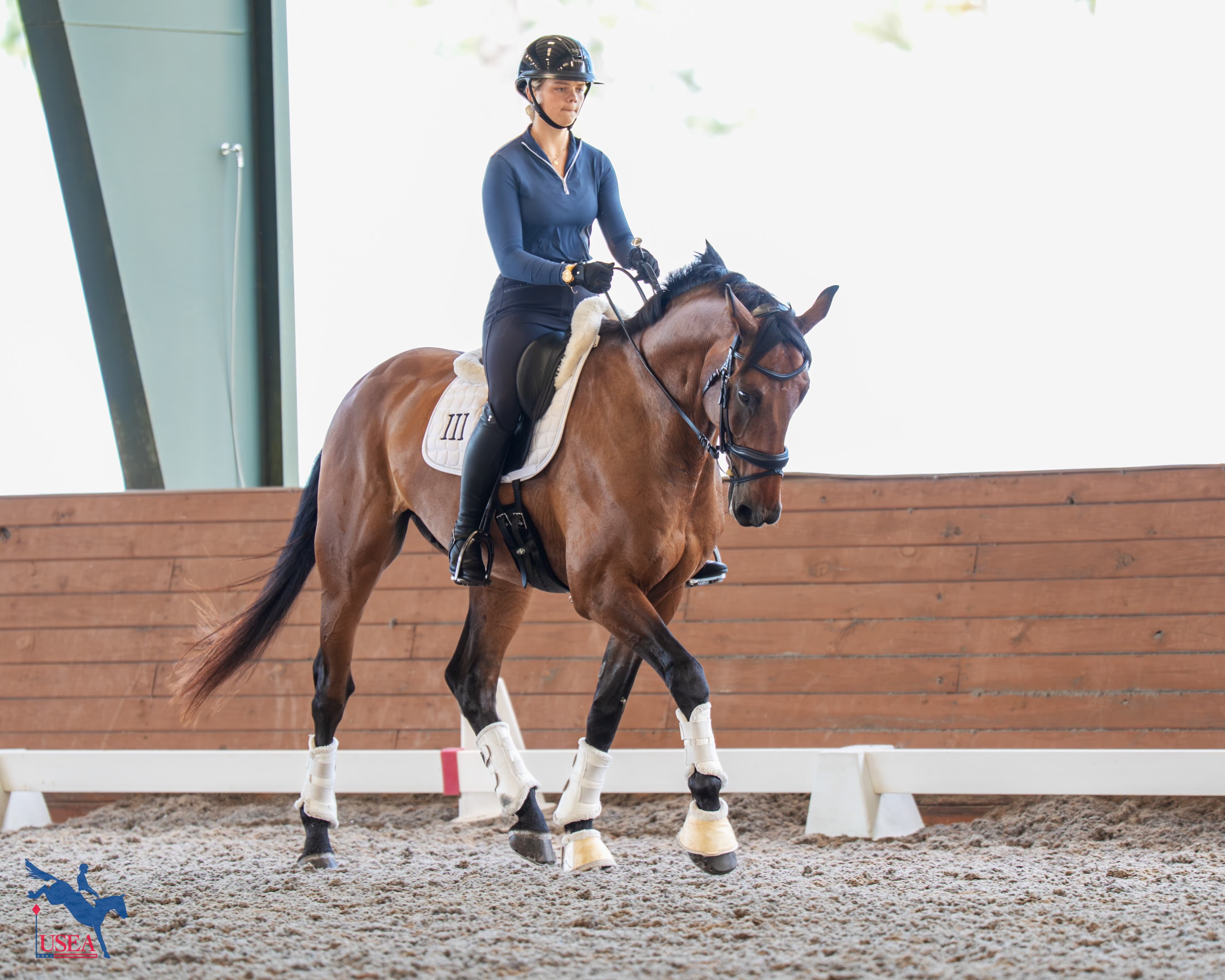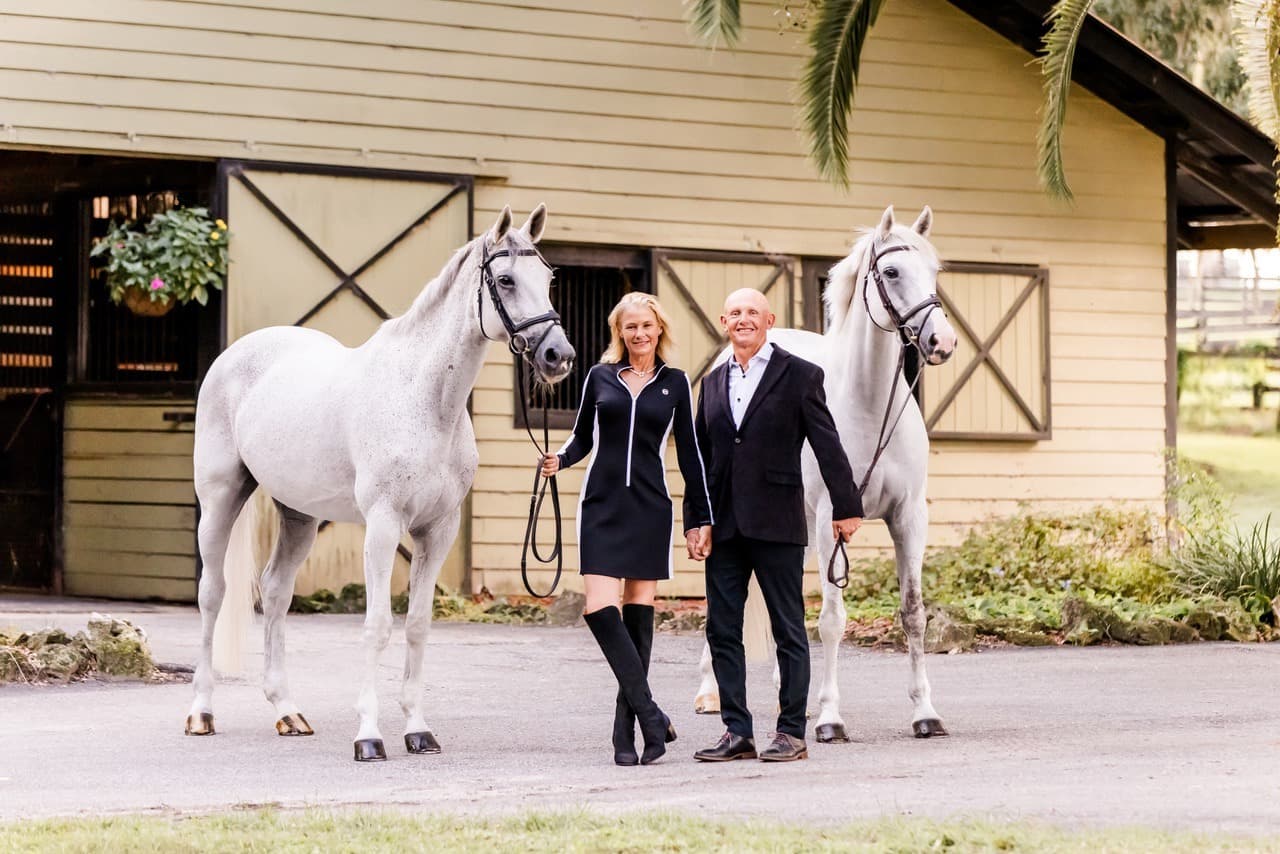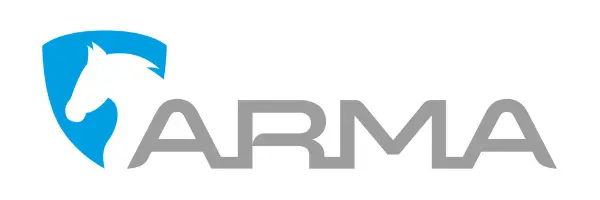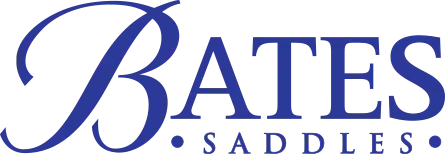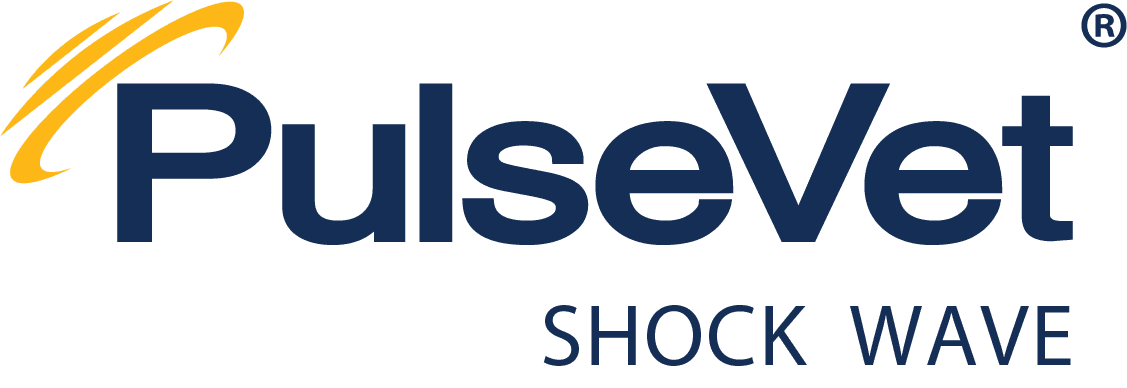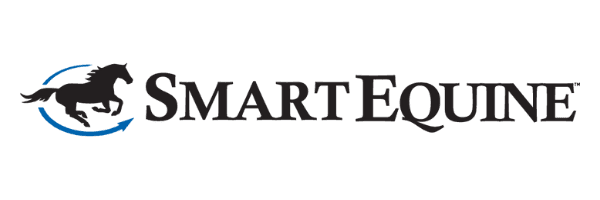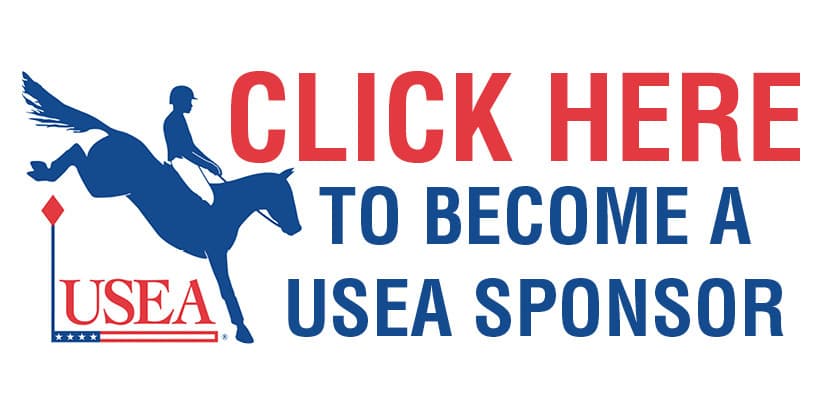Be a Trainer, Not a Rider on Day 1 of the USEA EA21 East II Clinic
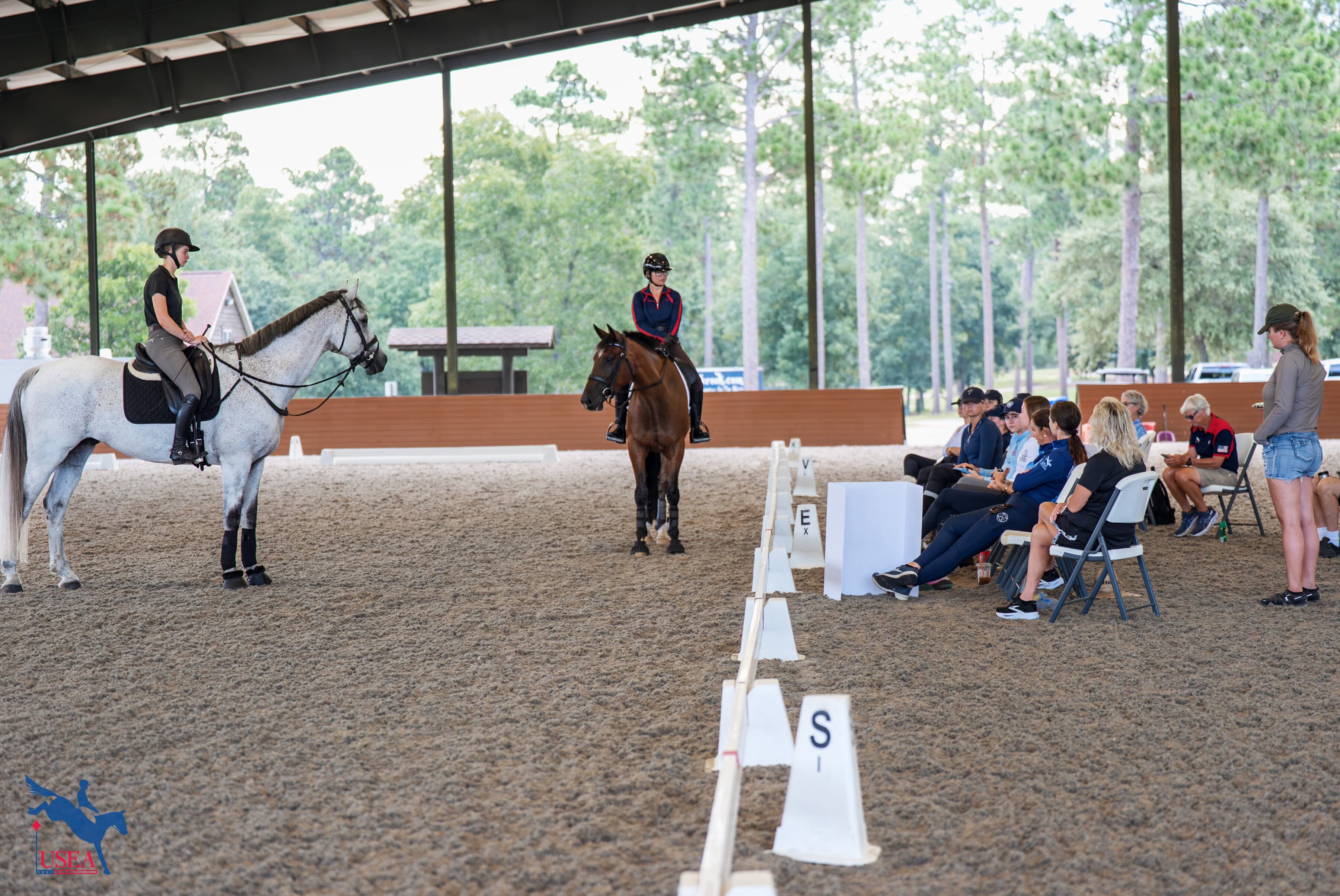
Aiken, S.C.—July 29—Stable View’s covered arena provided much appreciated relief from the summer heat for the 12 talented horses and riders selected for the USEA’s Eventing Athletes Under 21 (EA21) East II clinic. Coach Rebecca Brown perfectly summed up the first day’s lessons—“Ultimately the best riders are the best problem solvers.”
As the morning’s sessions got underway, Brown’s message to her pupils was consistent. “Be a trainer, not a rider.” With the unique skills and struggles each pair brought to the arena, Brown challenged the athletes to use this time to really train their horse rather than staying within their skill set comfort zone. She encouraged them to begin viewing a competition as the place to show off their training and thus reframe their perspective on their time in the saddle at home.
“This program is very education based, not necessarily competition based,” said Brown, “and ultimately, we’re trying to give these participants the skills to ride and then prove any horse, not just the one they’re on, but the ones that they’re going to have in the future.”
The hallowed German Training Scale was quite literally, ever present, drawn out on a poster board sitting next to the ring. As each pair of students began their warm up, not only did Brown ask those in the saddle to summarize their current training goals with their horses, but also asked the participants in the peanut gallery to watch and assess where they felt the pairs fell on the scale. Taking it a step further, Brown asked both saddled and seated participants to suggest exercises that would aid them in their day’s goals. It was clear that whether mounted or not, Brown intended for all attendees to be active contributors to each session.

Shoulders fore, transitions, and transitions within the gaits were popular tools applied to all skill levels and exercises throughout the day. The ultimate aim being that holy grail of flat work—self-carriage. “Self-carriage can be the difference between a score in the 30s and a score in the 20s,” Brown stressed. It is also the key that opens the door to a successful career. “The horse that goes up the levels is the horse that is trained well.”
Somewhat unusual for EA21 dressage day, no one switched horses in today’s sessions, where it has become rather tradition to swap mounts. The reason for this being simple; without exception, every horse and rider pair were making fantastic improvements and finished their rides so much stronger than they began. Switching horses would have just slowed down the day’s momentum. Brown used a variety of training tricks and tools to help each individual get the most out of their horse.
In the first session of the day, Juliana Cassar’s “piano hands” habit had Brown changing her grip to a “driving rein” (holding the reins directly over the pointer fingers with thumbs on top) to steady her hands. This gave Farwest De Barbereau, the 10-year-old Selle Français gelding, a softer contact to push forward into and channel his energy resulting in much more engagement behind and improving the over all quality of his gaits.
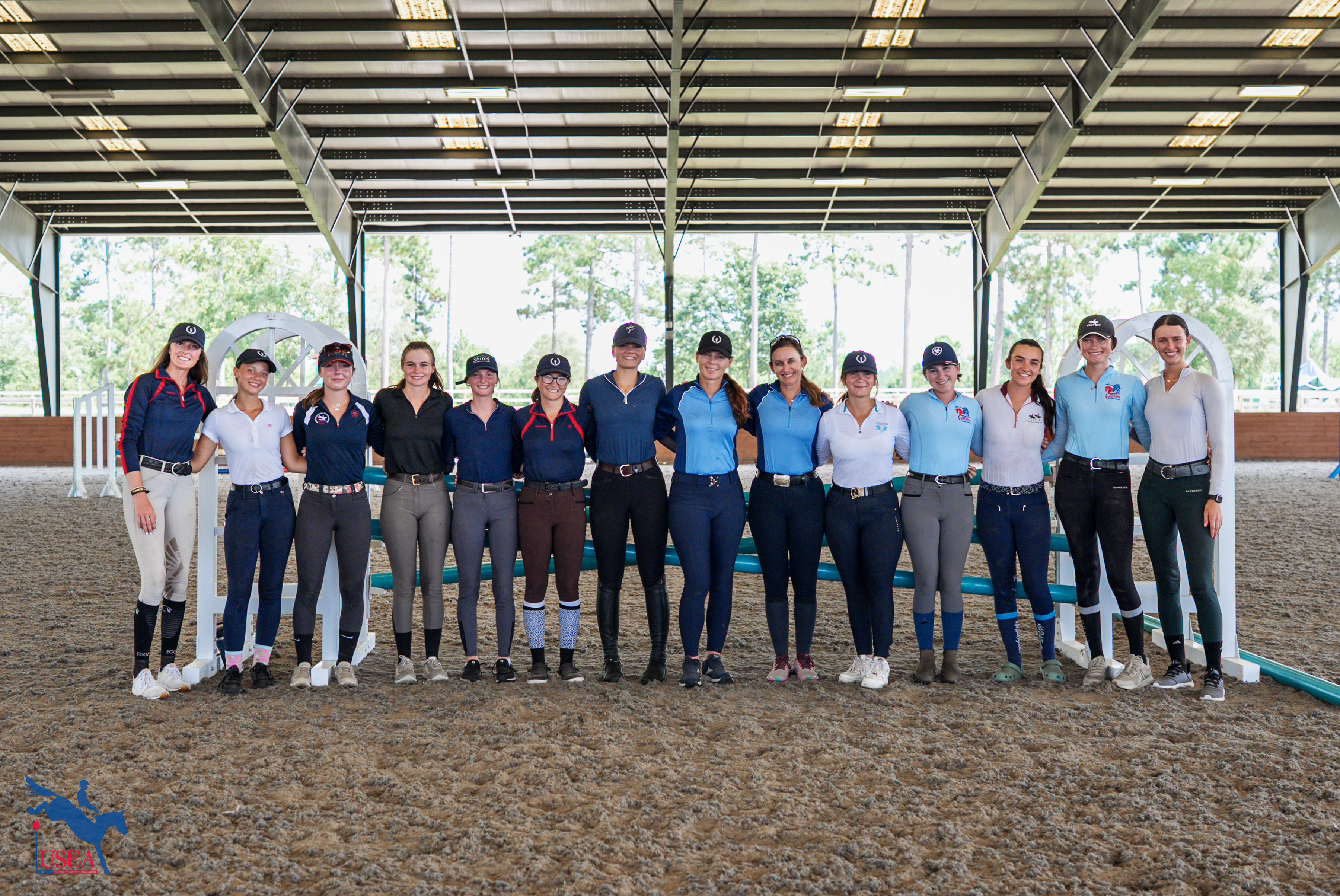
Ella Hubert used a short resistance band from the D ring of her saddle to her outside hand to create a more consistent connection. Almost immediately Hubert’s catch ride for the clinic, Charlie Il Postino, a 9-year-old Holsteiner gelding, was straighter into the contact and more through overall. Hubert expressed a lot of enthusiasm for the results and stated, “this exercise really helped me realize a lot of my issues with my horse at home are probably outside rein connection/straightness related, so I’m excited to try the same thing with him.”
The last session of the day was made up of Juliana Aulbach and her 10-year-old off-the-track Thoroughbred gelding, Love Sick Kitten, and Jillian Newman and Drombane Flyer, a 6-year-old Irish Sport Horse gelding. The greenest horses of the day, both made vast progress and looked as though they’d matured by at least a full year from when they started. Brown had Aulbach bridge her reins making her hands quieter and encourage “Zep” to relax and seek out the contact. Newman focused on rolling her shoulders back and hips forward, at one point riding with a dressage whip behind her elbows to emphasize the position, thus allowing “Ollie” to hold his own balance and establish a more advanced carriage.
The EA21 athletes and their horses were not the only students of the day. Ashley Johnson, an apprentice coach for the EA21 program, is spending the 2025 season watching and learning in preparation to teach her own EA21 clinic in 2026. A USEA “R” Judge and Technical Delegate, she was thoroughly impressed by the morning’s sessions.
“Rebecca did such an incredible job of being educational,” praised Johnson, “I loved her distinction between being a rider and being a trainer. I love that emphasis because that’s what your daily work is. Sometimes I think riders get too focused on what they have to do in the dressage ring in order to get a score and it actually takes away from the overall foundational quality of that horse’s training.”
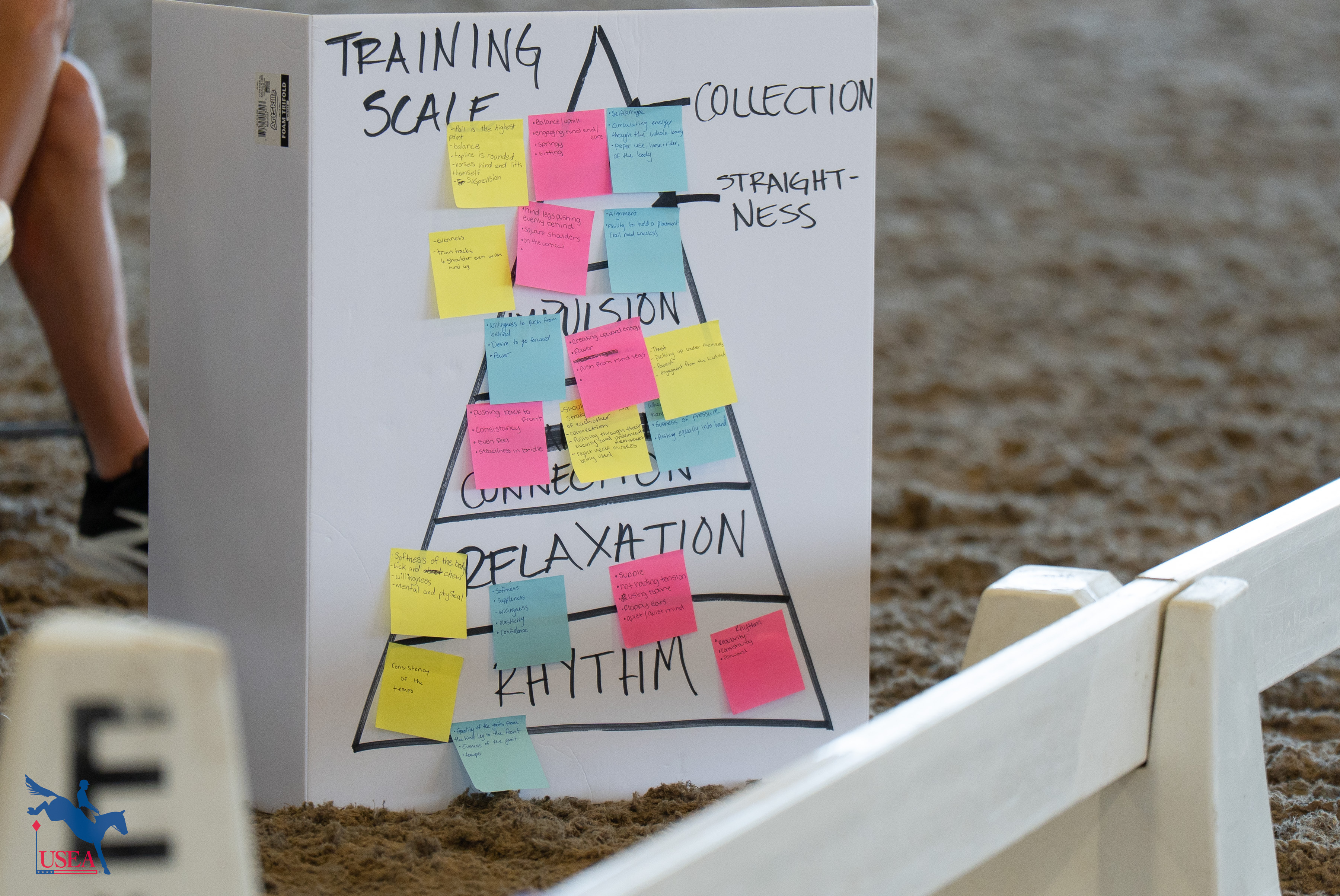
On being asked if this experience has helped prepare Johnson to teach EA21 clinics in 2026 she replied, “I have taken a lot of notes today. I’m an ECP [USEA Eventing Coaches Program] Level V instructor as well, and I just love learning from other coaches. I always think it’s inspirational to see how other people phrase things and how other people do things. The day has just been really incredible.”
Incredible indeed, Brown concluded, “I always find myself having a conversation with [the riders], to try and think outside of the box. Don’t just think of yourself as a rider, think of yourself as a trainer. If you think of yourself as a trainer, you’ll be thinking along those lines of improving the horse and taking the horse to the next step.”
East II | Stable View | Aiken, South Carolina
The Participants:
- Juliana Aulbach
- Juliana Cassar
- Annabelle Friend
- Ella Hubert
- Kasidy McMartin
- Jillian Newman
- Adelyn Rinehart
- Rebecca Roth
- Katelyn Smith
- Devon Tresan
- Hannah Willford
- Taylor Wing
Don't forget to follow the USEA’s coverage on social media!
Facebook | Instagram | Threads
About the USEA Emerging Athlete U21 Program (EA21)
The purpose of the USEA Emerging Athletes U21 Program (EA21) is to identify and provide consistent quality instruction to the next generation of elite event riders. The aim is to create a pipeline for potential team riders by identifying and developing young talent, improving horsemanship and riding skills, and training and improving skills and consistency.
The USEA Emerging Athletes U21 Program was launched in 2022 with a model of five summertime regional clinics taught by carefully selected USEA Eventing Coaches Program (ECP) coaches, leading to a winter national camp consisting of selected Young Riders from the regional clinics. Athletes who are 21 years or younger, are current members of their USEA Young Rider Area program, and are established at the Training Level or higher, are eligible to apply for the EA21 program. Click here to learn more about the USEA EA21 Program.
The USEA would like to thank ARMA, Bates Saddles, Horse Illustrated, Kerrits, PulseVet, Ride iQ, Schneiders Saddlery, Sidelines Magazine, WeRideTogether, and YETI for sponsoring the USEA Emerging Athletes U21 Program.












